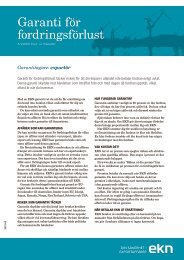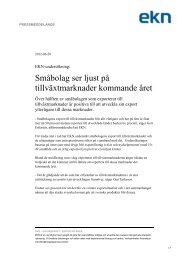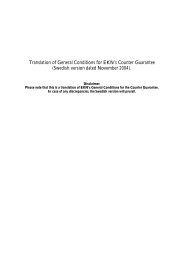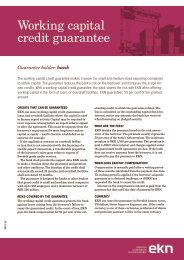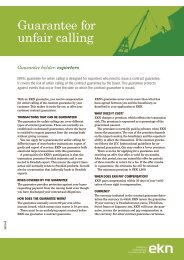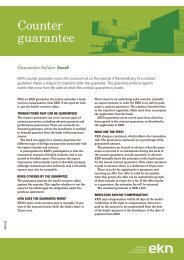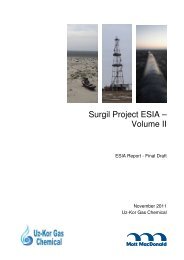Surgil ESIA Report - Volume III - EKN
Surgil ESIA Report - Volume III - EKN
Surgil ESIA Report - Volume III - EKN
You also want an ePaper? Increase the reach of your titles
YUMPU automatically turns print PDFs into web optimized ePapers that Google loves.
“Management of Ustyurt GCC infrastructure objects<br />
and <strong>Surgil</strong> GCF construction” UE »<br />
7. ANALYSIS OF DRILLING MUD DESIGN COMPOSITION AND PA-<br />
RAMETERS. DEFINITION OF DRILLING MUD AND FORMED DRILL-<br />
ING CUTTINGS DANGER CLASS<br />
7.1. There is apply as materials to drilling mud preparation and regulation of its properties: bentonite,<br />
caustic and ash soda, KMS К-4., and etc. All technological processes package is meant technology<br />
of flushing-out of well with operations on drilling mud preparation, clearing, treatment and<br />
circulation with use of the equipment and devices for their performance and control. Wells flushingout<br />
technological process is realized so that to achieve best technical and economic indexes of drilling<br />
with observance of measures for environmental protection.<br />
7.2. Drilling process consists in rock failure by chisel with drilling rock transportation (flushing) by<br />
drilling mud onto surface. Type of drilling mud and its formula are selected proceeding from miming<br />
and geological conditions of hole making, with a glance of their least harmful impact on soils<br />
and underground waters in accordance with current CD.<br />
7.3. There are applied the following technological materials for drilling mud preparation and treatment<br />
during well drilling and fixing: gel material, soda ash, caustic soda, К-4, oil, CMC, FCLS,<br />
graphite, cement and others. All above-stated materials basically are nontoxic and transported in<br />
compact bags and barrels. They are stored in specially allotted places under shelters and in sheds on<br />
the oilrig.<br />
7.4. Gel materials represent dry and ground clay with chemical reagents or without them. For drilling<br />
mud preparation there is used basically gel materials from bentonitic, hydro micaceous (local)<br />
and palygors-kite clays, each of which contains various impurities of other minerals. There is 70%<br />
and more of the montmorillonite mineral in bentonitic gel materials.<br />
7.5. It is accepted to subdivide of bentonites into alkaline (sodium), alkaline-earth (calcium). There<br />
are prevailed univalent metals Na + and K + in composition of the sodium bentonite exchange capacity.<br />
Sodium bentonites possess high osmotic pressure, good swelling and dispersed in water, can<br />
turn into calcium (by liming), have high slurry yield. Calcium bentonites have low osmotic pressure,<br />
poorly swelled and dispersed in water, can turn into sodium (soda ahs additive), have low slurry<br />
yield.<br />
7.6. Oil is the organic substance containing various solid hydrocarbons and tarry matters. Depending<br />
on their composition the oil divided into high-gravity and heavy. It is applied in drilling mud<br />
composition as greasing additive to improvement of drilling process: reduction of freeze-in danger,<br />
increases of chisel operating efficiency, decrease in hydraulic resistance.<br />
7.7. Caustic soda is colorless opaque crystal mass. It is used basically for regulation of drilling mud<br />
рН. Drilling mud treatment is carried out by 5-10% caustic soda solution, as the large additives lead<br />
to bodying and filter loss increase and deterioration of drilling mud properties. It is delivered in a<br />
hard form in iron barrels (drums) by mass of 100-200kg or in the form of 40-47% concentration solution.<br />
NaOH strongly absorbs moisture and carbonic gas in air, turning into carbonate. During dissolution<br />
allocates of heat considerable amount. It does not form dust. MPC is 0.5/m 3 .<br />
- 15 -



